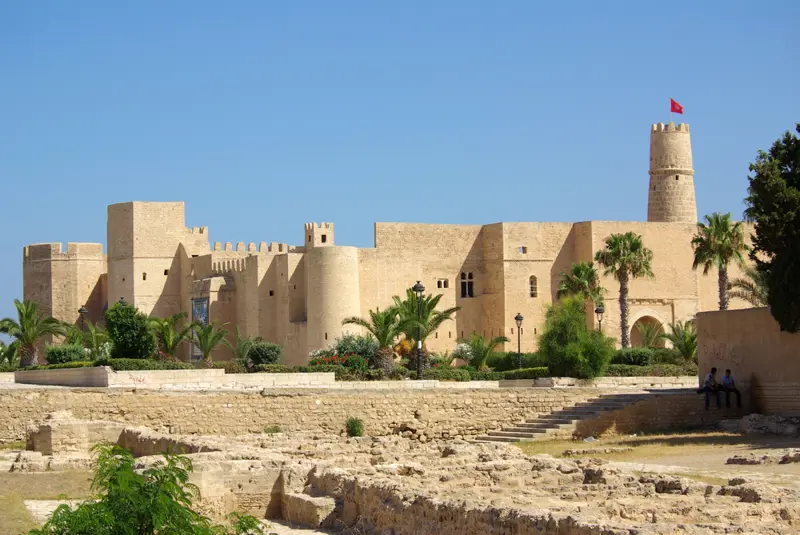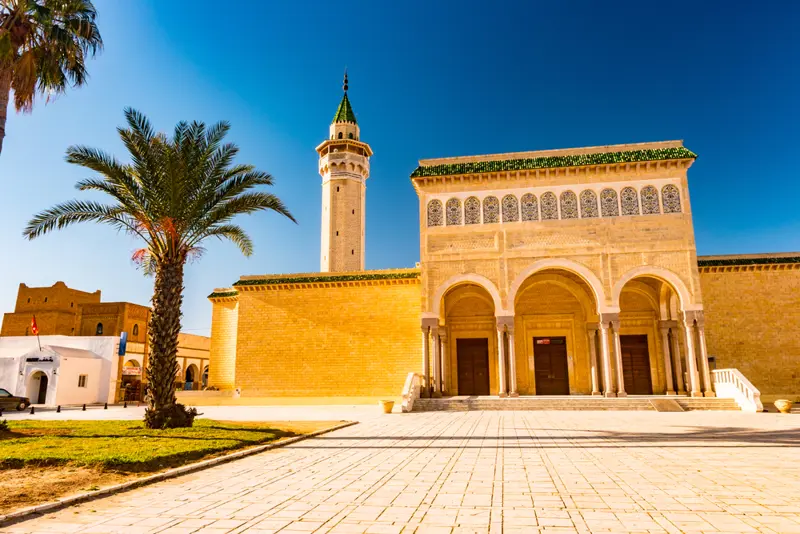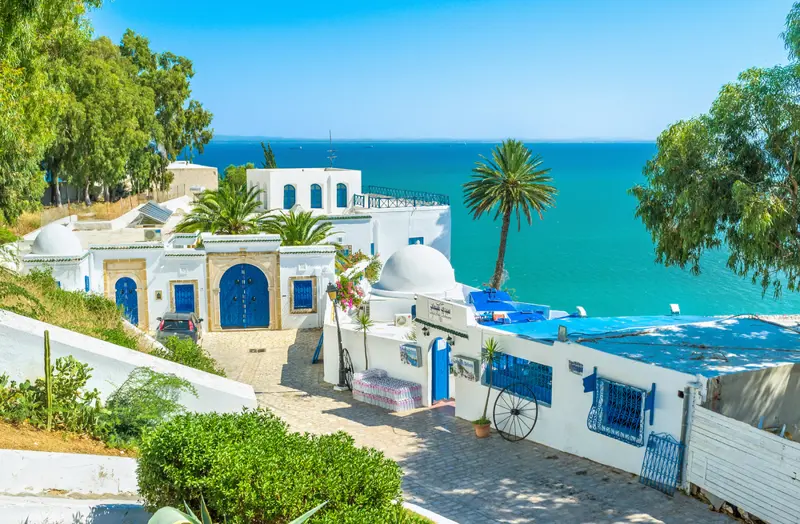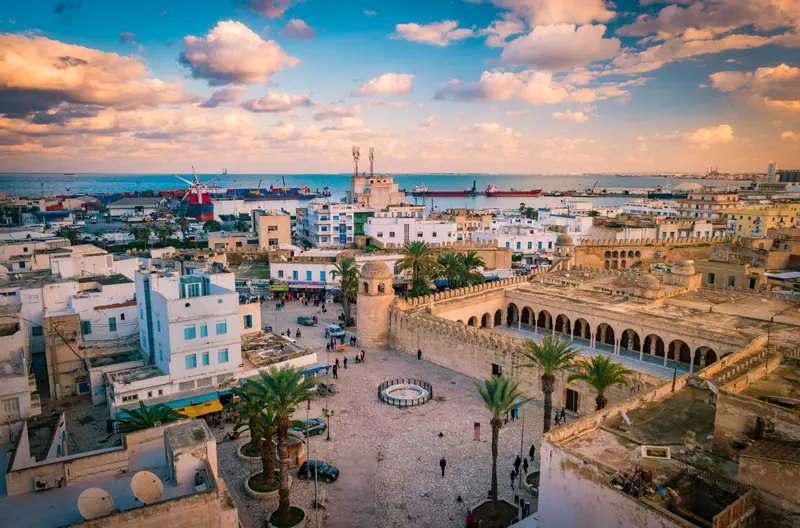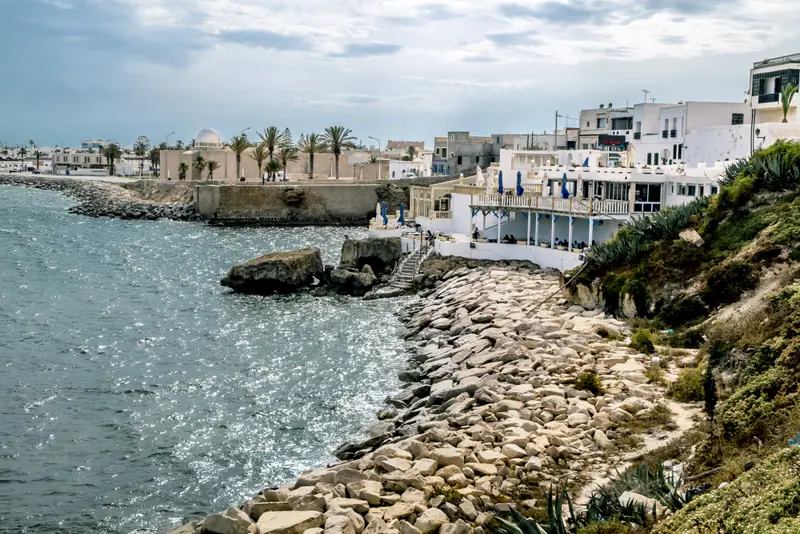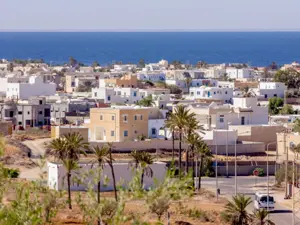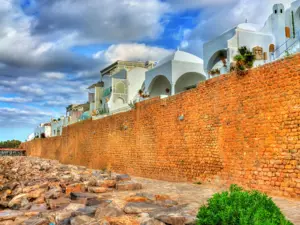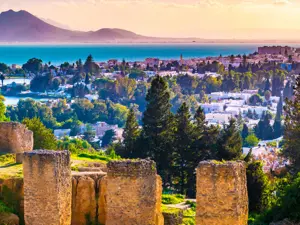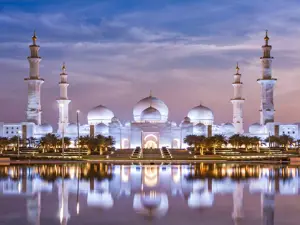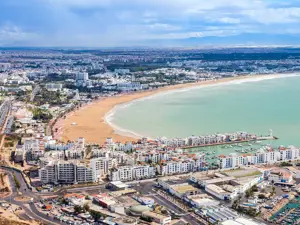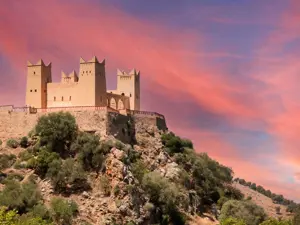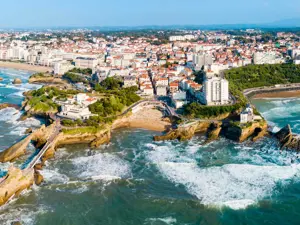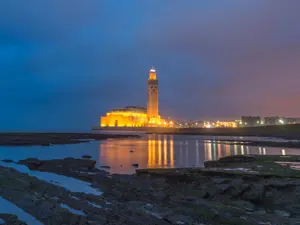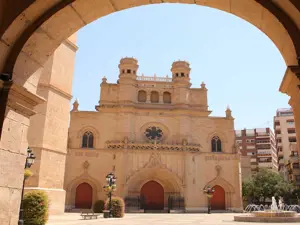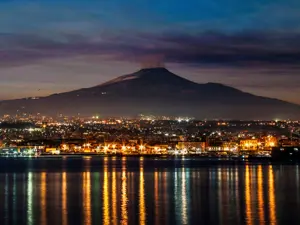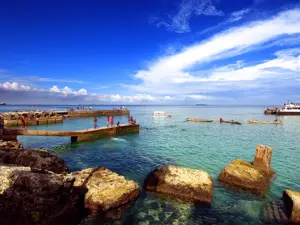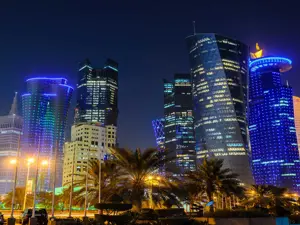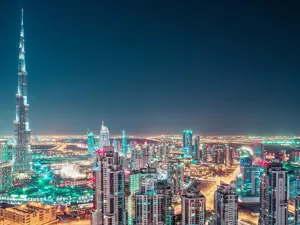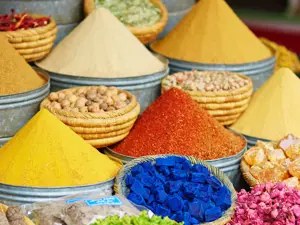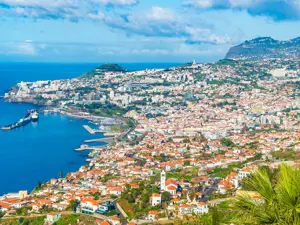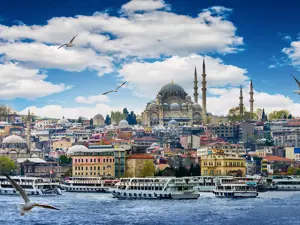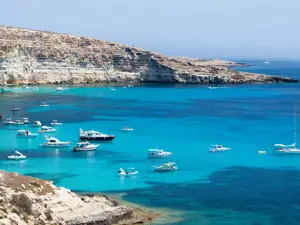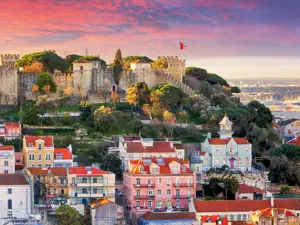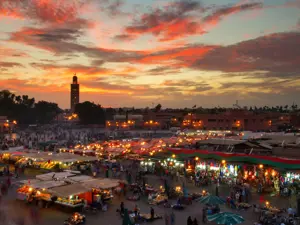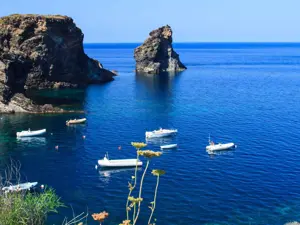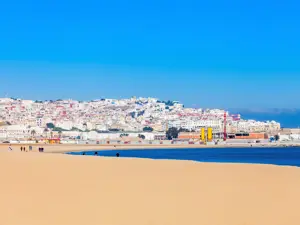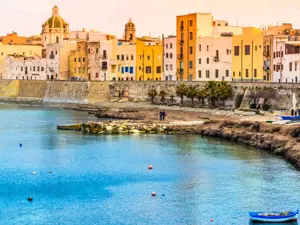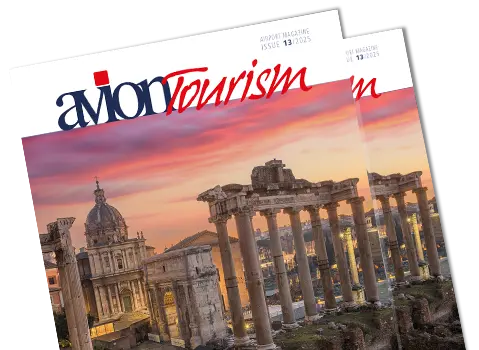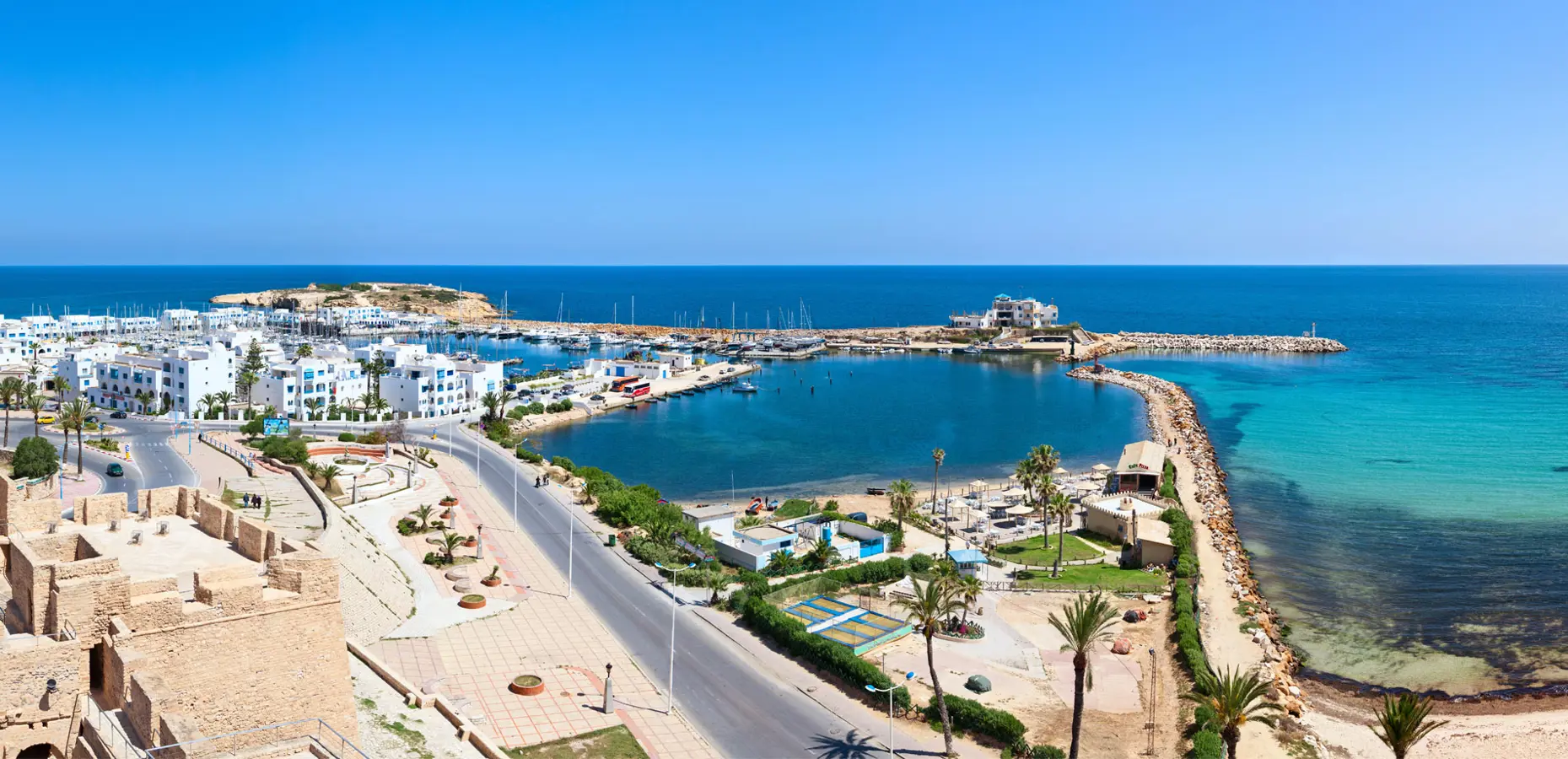
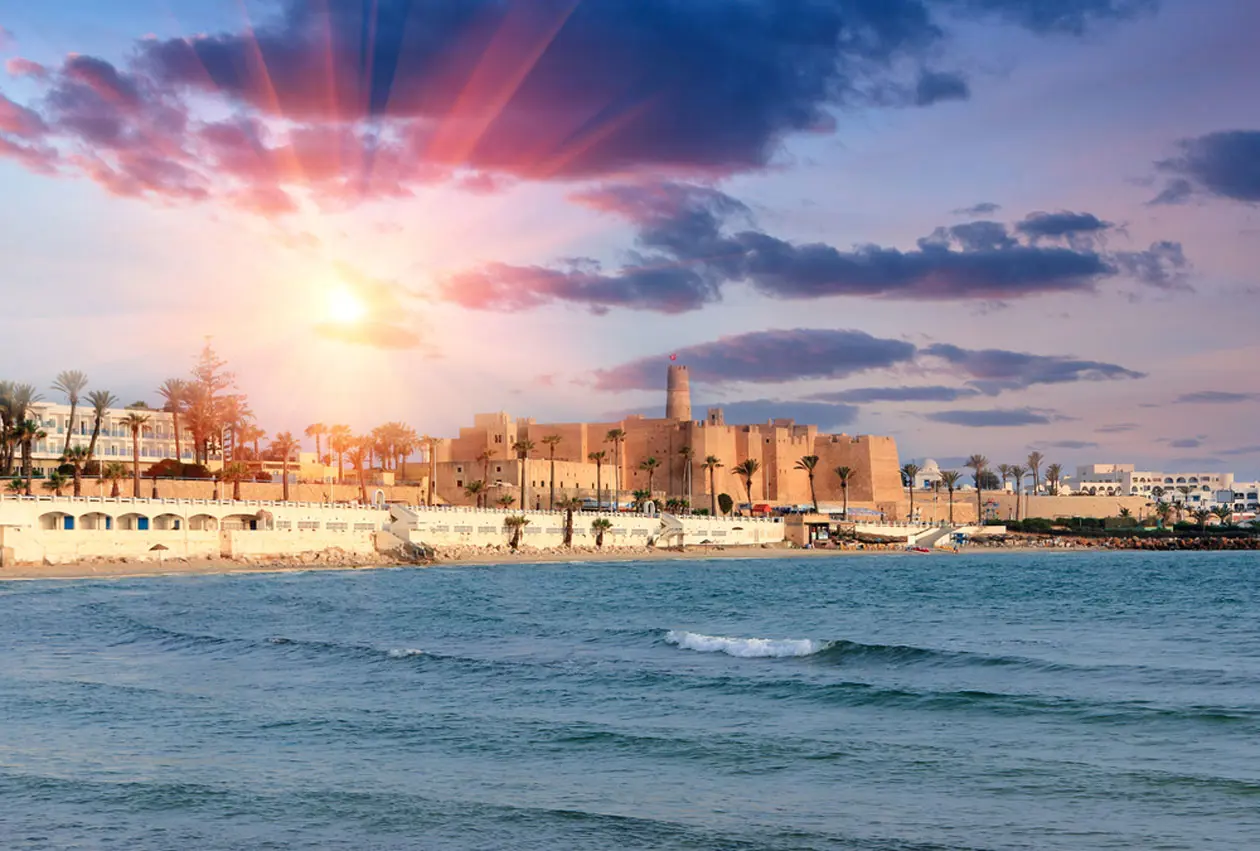
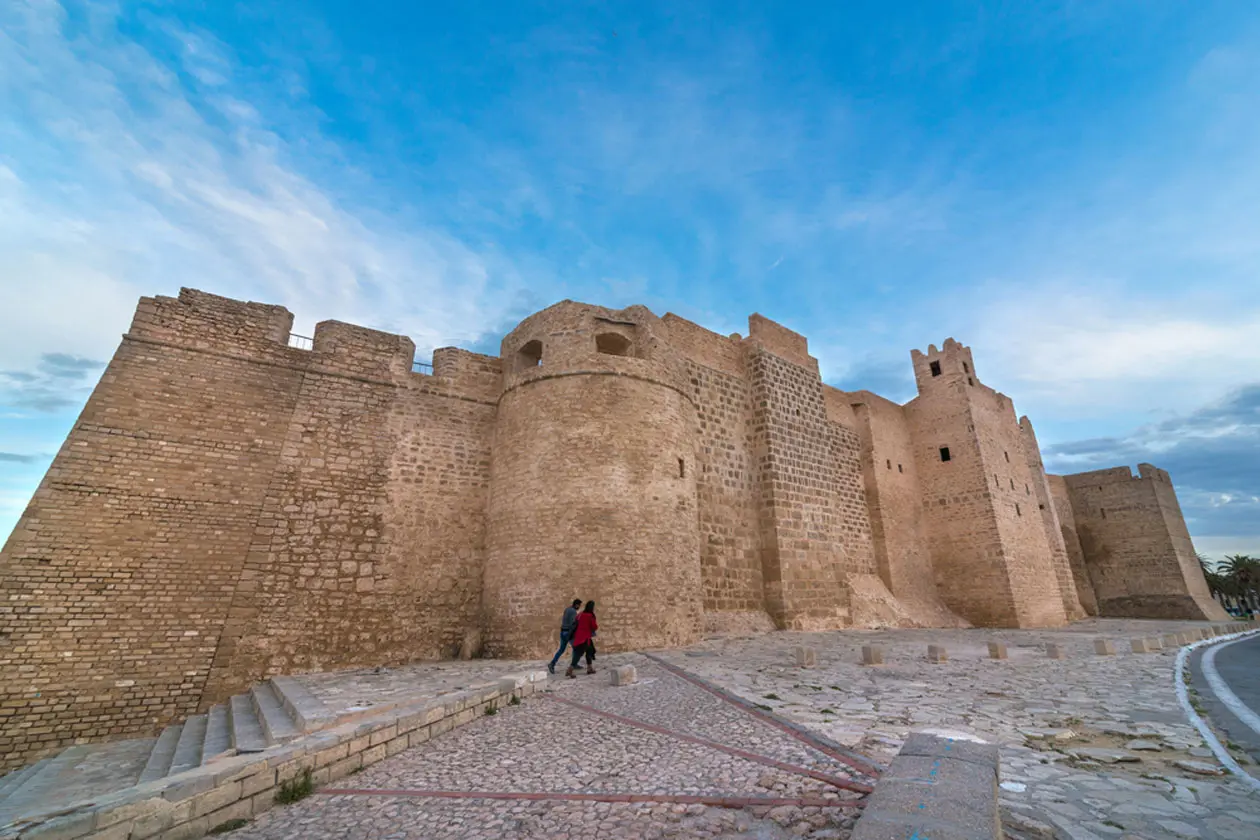
The main attraction of this delightful city is the famous Ribat of Harthema, a fortified Islamic monastery built in 796 as a fortress, and the first example of a ribat on the African continent. Today the courtyard is used for theatre performances and evening shows. In 1976 the director Franco Zeffirelli used the ribat as the location for several scenes of his film “Jesus of Nazareth”.
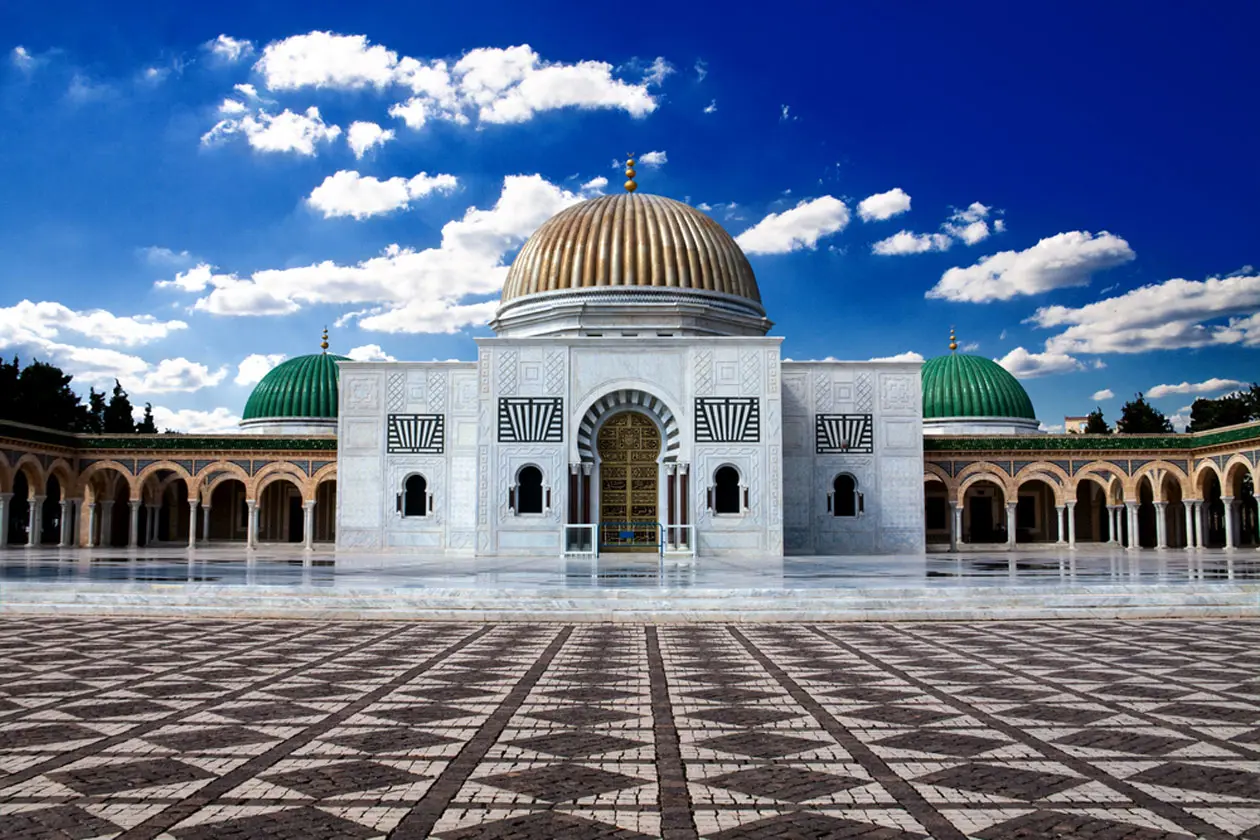
This building has three domes (two green and one golden) and two minarets that mark the entrance to the complex. It is in fact the Mausoleum of Bourguiba, the first president of Tunisia, and in spite of the fact that it is a recent building, it was constructed according to traditional designs. The prayer room is decorated with 86 red marble columns and can house up to 1,000 worshippers.
To taste: couscous with small charkaw fish and marqet khodra, slow-cooked lamb with green beans and seasonal vegetables.
In Monastir, all fishes such as sea bass, sea bream, octopus and squid are grilled or fried with delicious local spices.

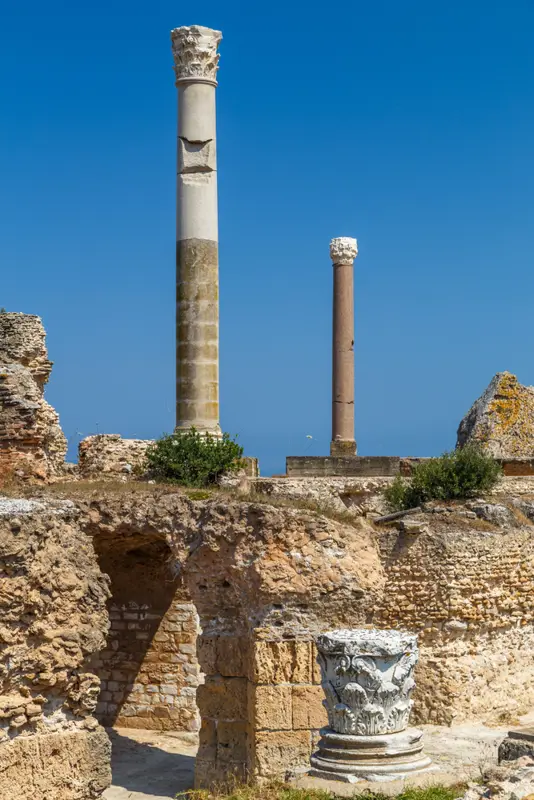
The ancient Neapolis (today Nabeul), famous for its ceramics introduced by the Andalusians in the XV century;
The ancient Pupput and Medina, built for the first time by the Arabs in the X century;
The capital Tunis, with its Bardo Museum, an old XIX century palace with exhibition halls and galleries filled with archaeological and historical items from Tunisia’s history. The Bardo also houses the largest collection of Roman mosaics in the world;
Carthage, now a suburb of Tunis, which offers a large archaeological site with the Baths of Antoninus Pius;
The famous blue and white village of Sidi Bou Said;
Port El Kantaoui, a striking port known as the “Portofino” of Tunisia, the smartest place along the coast.
Text by Luca Lembi
Photo: Copyright © Sisterscom.com / Shutterstock
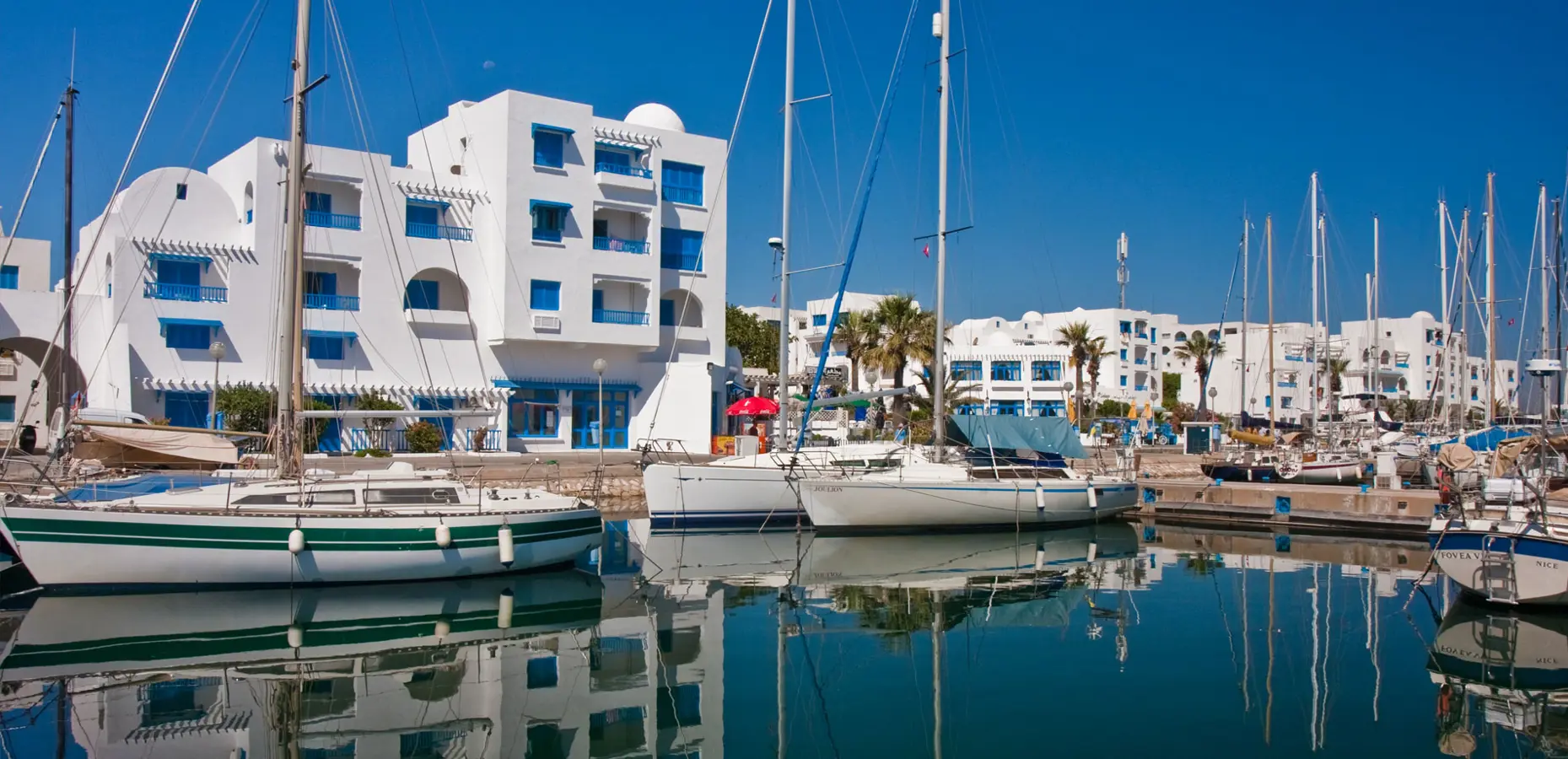
Monastir is a welcoming city and offers different possibilities for accommodation.
